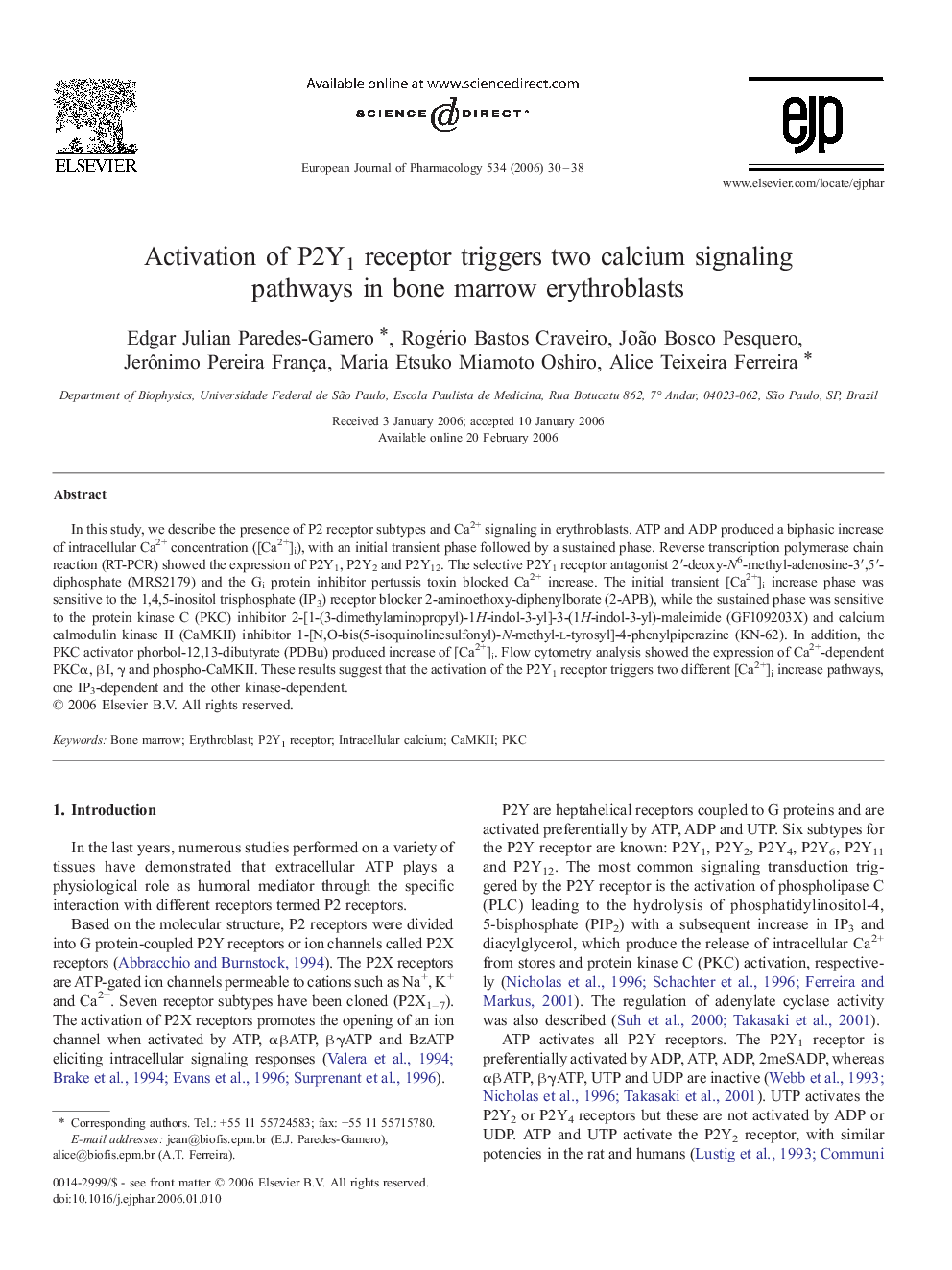| Article ID | Journal | Published Year | Pages | File Type |
|---|---|---|---|---|
| 2537466 | European Journal of Pharmacology | 2006 | 9 Pages |
In this study, we describe the presence of P2 receptor subtypes and Ca2+ signaling in erythroblasts. ATP and ADP produced a biphasic increase of intracellular Ca2+ concentration ([Ca2+]i), with an initial transient phase followed by a sustained phase. Reverse transcription polymerase chain reaction (RT-PCR) showed the expression of P2Y1, P2Y2 and P2Y12. The selective P2Y1 receptor antagonist 2′-deoxy-N6-methyl-adenosine-3′,5′-diphosphate (MRS2179) and the Gi protein inhibitor pertussis toxin blocked Ca2+ increase. The initial transient [Ca2+]i increase phase was sensitive to the 1,4,5-inositol trisphosphate (IP3) receptor blocker 2-aminoethoxy-diphenylborate (2-APB), while the sustained phase was sensitive to the protein kinase C (PKC) inhibitor 2-[1-(3-dimethylaminopropyl)-1H-indol-3-yl]-3-(1H-indol-3-yl)-maleimide (GF109203X) and calcium calmodulin kinase II (CaMKII) inhibitor 1-[N,O-bis(5-isoquinolinesulfonyl)-N-methyl-l-tyrosyl]-4-phenylpiperazine (KN-62). In addition, the PKC activator phorbol-12,13-dibutyrate (PDBu) produced increase of [Ca2+]i. Flow cytometry analysis showed the expression of Ca2+-dependent PKCα, βI, γ and phospho-CaMKII. These results suggest that the activation of the P2Y1 receptor triggers two different [Ca2+]i increase pathways, one IP3-dependent and the other kinase-dependent.
